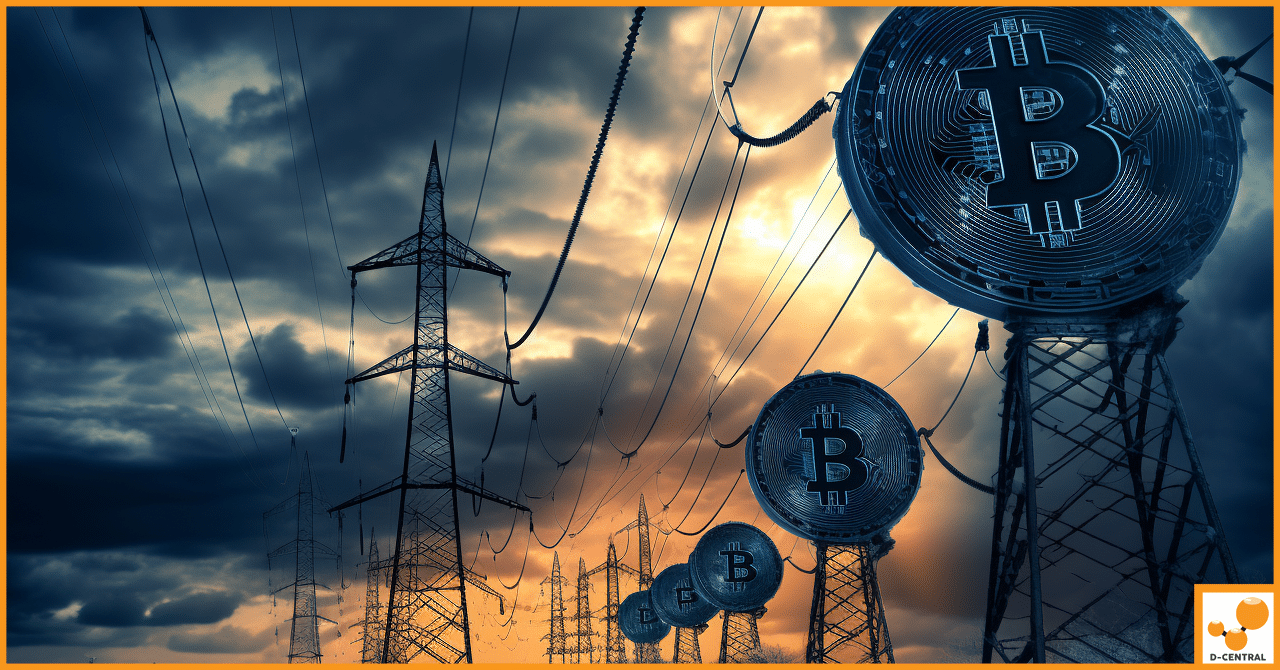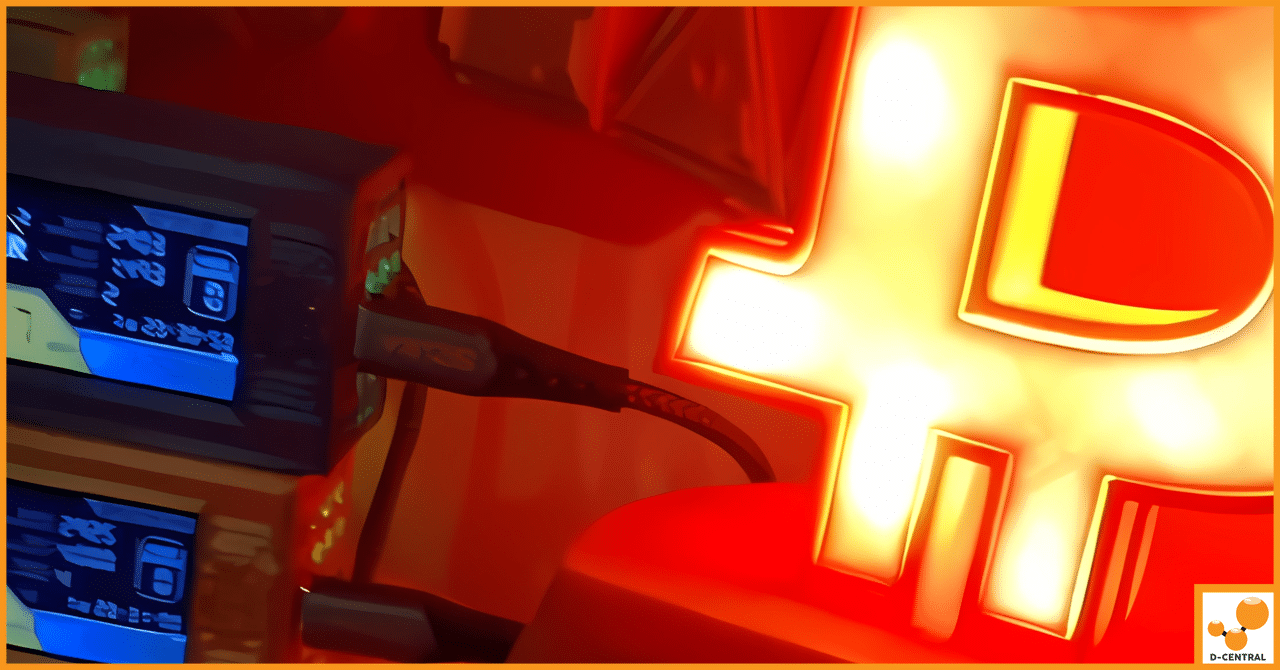
Bitcoin Mining: The Unsung Hero in National Grid Resilience and Winter Preparedness
As winter approaches, the challenges it poses to national power grids become a topic of increasing concern. The season’s shorter
4479 Desserte Nord Autoroute 440, Laval, QC H7P 6E2

In the ever-evolving world of cryptocurrency, Bitcoin stands as a colossus, largely due to its unique mining process and the pivotal role played by miners. Bitcoin mining, at its core, is the backbone of the Bitcoin network, a complex yet fascinating process where miners use powerful computers to solve intricate mathematical puzzles. This not only facilitates the creation of new bitcoins but also plays a crucial role in the maintenance and development of the blockchain, the ledger that records all transactions in the network.
Miners are the custodians of this process, ensuring the integrity, security, and continuity of the Bitcoin blockchain. Every time a miner successfully solves a puzzle, a new block is added to the blockchain. This block contains a batch of transactions, and for their efforts, miners are rewarded with newly minted bitcoins – a process that simultaneously incentivizes the mining activity and controls the introduction of new bitcoins into the system.
However, with great power comes great responsibility, and a question that often arises in the Bitcoin community is: Can miners force invalid blocks into the Bitcoin blockchain? This query touches upon the fundamental aspects of blockchain integrity and security. An invalid block, one that doesn’t comply with the network’s rules, could potentially undermine the trust and reliability that form the bedrock of Bitcoin’s value.
This question is not just a technical curiosity but holds immense relevance for the entire Bitcoin community and the mining industry. For miners, understanding the limits of their power and the consequences of their actions is crucial for maintaining the health of the network. For users and investors, the assurance that the system is tamper-proof and secure underpins their confidence in Bitcoin as a digital asset.
Bitcoin mining is the lifeblood of the Bitcoin network, a process that not only generates new bitcoins but also secures and validates all transactions on the network. At its heart, mining involves solving complex cryptographic puzzles, a task that requires significant computational power.
When miners attempt to solve these puzzles, they are essentially competing to add the next block of transactions to the Bitcoin blockchain. Each block contains a unique and extremely difficult puzzle, and the first miner to solve it gets the right to add the block to the blockchain. This process is known as ‘proof of work’, and it’s fundamental to Bitcoin’s decentralized nature.
The creation of a block starts with the aggregation of recent transactions. Miners select these transactions from a pool of pending transactions. Each transaction within a block is verified for its validity; they must not contradict previous transactions in the blockchain, and they must carry the correct digital signatures of the Bitcoin owners.
Once a miner solves the puzzle and creates a block, it’s not automatically added to the blockchain. Instead, it must first be validated by other nodes in the network. This validation process is critical to maintaining the integrity and security of the Bitcoin network.
A block is considered valid if it meets several criteria:
If a block fails to meet any of these criteria, it is rejected by the network, deemed invalid, and does not become part of the blockchain.
Miners play a dual role in the Bitcoin network. Firstly, they are creators, adding new blocks to the blockchain and introducing new bitcoins into circulation. Secondly, they are validators, ensuring that only valid transactions are recorded on the blockchain.
This role is not just about earning bitcoins through mining rewards and transaction fees; it’s about maintaining the trust and security of the entire Bitcoin network. Miners are incentivized to follow the rules of the network because if they deviate, their blocks will be rejected, and they will lose the potential rewards.
In summary, Bitcoin mining is a complex interplay of solving cryptographic puzzles, creating new blocks, and validating these blocks according to the stringent rules of the Bitcoin protocol. This process ensures the security, integrity, and continued functioning of the decentralized Bitcoin network, with miners at its core.
A common narrative in the Bitcoin community is the perceived dominance of miners over the network. This perception suggests that miners, due to their role in creating and validating blocks, wield significant control over the Bitcoin blockchain. However, this view oversimplifies the complex dynamics of the network and overlooks the decentralized nature of Bitcoin.
The article “Bitcoin is not ruled by miners” from Bitcoin Wiki provides valuable insights into this misconception. It clarifies that miners, contrary to popular belief, do not act as a governing body for Bitcoin. This misunderstanding likely stems from simplified explanations of Bitcoin and misinterpretations of the original whitepaper.
The whitepaper’s discussion of proof-of-work as “one-CPU-one-vote” is often taken out of context. This phrase, in its essence, refers to the process of block validation and the decentralized consensus mechanism, not a democratic governance system among miners. The whitepaper emphasizes that the majority decision is represented by the longest chain with the greatest proof-of-work effort, but this should not be misconstrued as giving miners the power to unilaterally dictate the network’s rules.
The “one-CPU-one-vote” concept is a cornerstone of Bitcoin’s design, but its true implication is often misunderstood. It was intended to describe the decentralized and democratic nature of the Bitcoin network, where each unit of computing power contributes to the consensus process. However, it does not imply that miners have absolute control over the network.
In reality, the Bitcoin network operates on a consensus model where changes to the protocol require widespread agreement from various stakeholders, including miners, developers, and users. Miners play a crucial role in processing transactions and securing the network, but they do not have the authority to unilaterally enforce changes or validate invalid blocks.
This decentralized model ensures that no single group, including miners, can exert undue influence over the network. The checks and balances inherent in the system prevent any form of centralization or control by a single entity, preserving the foundational ethos of Bitcoin as a decentralized digital currency.
The myth of miner control is just that—a myth. While miners are integral to the functioning of the Bitcoin network, they operate within a system of rules and checks that maintain the balance of power and uphold the decentralized principles of Bitcoin. Understanding this is crucial for anyone involved in the Bitcoin ecosystem, from miners to investors to everyday users.
The Bitcoin network, renowned for its robust security and integrity, employs a sophisticated system to prevent the acceptance of invalid blocks. This system is crucial in maintaining the trust and reliability that are the hallmarks of Bitcoin’s blockchain technology.
At the heart of this defense mechanism are the full nodes. These nodes, operated by various participants in the Bitcoin network, independently validate each block and transaction against Bitcoin’s consensus rules. Unlike miners who primarily focus on creating new blocks, full nodes serve as the guardians of the network’s rules.
Full nodes perform several critical functions:
The Bitcoin network has faced several instances where invalid blocks were attempted to be inserted. These cases serve as practical examples of the network’s resilience.
These examples highlight the network’s capacity to defend against invalid blocks, whether they result from honest mistakes, software incompatibilities, or deliberate attempts to exploit the system. The combined efforts of miners, full nodes, and developers in these situations underscore the collaborative nature of maintaining Bitcoin’s security and reliability.
The Bitcoin network’s defense against invalid blocks is a testament to its decentralized, robust design. The vigilant role of full nodes, coupled with the collective efforts of the community, ensures that the blockchain remains secure and trustworthy, reinforcing Bitcoin’s position as a leading digital currency.
The foundation of Bitcoin mining lies not just in the technological marvels of blockchain and cryptography but also in a carefully designed economic incentive system. This system is pivotal in ensuring that miners, key players in the network, adhere to the established rules and protocols.
Attempting to insert invalid blocks into the blockchain can have serious repercussions for miners:
The relationship between miners and the rest of the Bitcoin network is a delicate balance of power:
The economic incentives in Bitcoin mining are intricately designed to align the interests of miners with the overall health and integrity of the network. While miners play a critical role in the ecosystem, their power is balanced by the protocol’s rules and the collective oversight of the network’s participants, ensuring the stability and security of Bitcoin.
The Bitcoin protocol is a marvel of engineering, designed with a multitude of technical safeguards that prevent the acceptance of invalid blocks. These safeguards are critical in maintaining the network’s integrity and security.
Consensus rules serve as the backbone of Bitcoin’s network integrity. These rules are established and maintained by the Bitcoin developer community, and any proposed changes undergo rigorous scrutiny and debate. The role of consensus rules is to:
In summary, the technical safeguards in the Bitcoin protocol, including cryptographic PoW, transaction verification, and adherence to consensus rules, form a formidable defense against the acceptance of invalid blocks. These safeguards, combined with the vigilance of the full node network, ensure the trustworthiness and security of the Bitcoin blockchain.
In the dynamic landscape of Bitcoin, real-world incidents involving invalid blocks serve as invaluable lessons, revealing the network’s resilience and the collective wisdom of the community. Let’s delve into a few notable case studies to understand their implications.
Incident: In March 2013, an unintentional fork occurred in the Bitcoin blockchain. This fork resulted from a block that was valid according to newer software versions but was rejected by nodes running older versions.
Response: The network’s response was swift and collaborative. Miners downgraded their software to reunify the chain, demonstrating the Bitcoin community’s ability to self-correct and maintain consensus.
Lessons: This incident highlighted the importance of protocol upgrades and the need for coordination within the community. It showcased Bitcoin’s adaptability and the commitment of miners and nodes to maintain the network’s integrity.
Incident: In 2017, allegations surfaced that certain miners were exploiting a flaw in Bitcoin’s mining algorithm known as ASICBoost to gain an unfair advantage.
Response: The Bitcoin community and developers responded by discussing potential countermeasures and the ethical implications of using ASICBoost. This controversy prompted greater transparency and discussions around mining practices.
Lessons: The ASICBoost controversy underscored the importance of transparency and ethical mining practices within the Bitcoin ecosystem. It showcased the community’s commitment to addressing issues and maintaining fairness.
Incident: There have been instances where miners attempted to insert invalid blocks into the blockchain, either due to software errors or malicious intent.
Response: In each case, the network’s consensus rules and the vigilance of full nodes ensured the rejection of these invalid blocks. Miners who attempted such actions faced economic consequences, including the loss of rewards.
Lessons: These incidents highlight the effectiveness of Bitcoin’s technical safeguards and the network’s commitment to upholding its rules. They serve as a reminder that attempts to compromise the blockchain’s integrity are swiftly met with rejection.
In this comprehensive exploration of the relationship between Bitcoin miners and the possibility of forcing invalid blocks into the blockchain, we’ve uncovered key insights that demystify the intricacies of the network.
Bitcoin’s strength lies in its resilience and the collective vigilance of its participants. While miners are essential, they operate within a network that rigorously upholds rules and principles. The balance of power ensures that no single entity, including miners, can dominate or undermine the network.
As leaders in the Bitcoin mining industry, D-Central Technologies reaffirms its commitment to transparency, integrity, and excellence. Our experiences and expertise reflect the values of the Bitcoin community, where collaboration and adherence to principles are paramount.
In the ever-evolving landscape of Bitcoin and cryptocurrency, staying informed is key. We encourage readers to continue learning about Bitcoin, mining practices, and the broader blockchain ecosystem. Engage in discussions, ask questions, and contribute to the community’s growth and development.
Bitcoin’s success is a testament to the collective efforts of its users, miners, developers, and enthusiasts. By remaining engaged and actively participating in the Bitcoin mining community, you play an integral role in shaping the future of this groundbreaking technology.
What is Bitcoin mining?
Bitcoin mining is the process by which miners use powerful computers to solve complex mathematical puzzles, leading to the creation of new bitcoins and validating transactions on the Bitcoin blockchain.
Can Bitcoin miners force invalid blocks into the blockchain?
No, Bitcoin miners cannot force invalid blocks into the blockchain. Blocks must meet specific validation criteria and be verified by other nodes in the network to be accepted.
What ensures the integrity and security of the Bitcoin network?
The Bitcoin network employs full nodes, which independently validate each block against Bitcoin’s consensus rules. This, along with other technical safeguards, maintains the network’s integrity and security.
How do full nodes participate in the Bitcoin network?
Full nodes independently verify each block and transaction, reject invalid blocks, and relay valid blocks. They act as a defense mechanism against invalid blocks.
What are some real-world cases that tested Bitcoin’s block validation process?
There were notable incidents like the 2013 unintentional fork and the ASICBoost controversy in 2017, which both tested and ultimately demonstrated the network’s resilience and ability to reach consensus in the face of challenges.
What incentives do Bitcoin miners have to follow the rules?
Miners are incentivized by rewards for block discovery which they receive only for valid blocks. The costs of mining also discourage miners from attempting to insert invalid blocks due to the economic risks involved.
What is the balance of power within the Bitcoin network?
Miners, while crucial in creating and processing blocks, do not have unilateral control over the Bitcoin network. The system is designed with checks and balances where full nodes validate miners’ work, and changes require widespread consensus.
DISCLAIMER: D-Central Technologies and its associated content, including this blog, do not serve as financial advisors or official investment advisors. The insights and opinions shared here or by any guests featured in our content are provided purely for informational and educational purposes. Such communications should not be interpreted as financial, investment, legal, tax, or any form of specific advice. We are committed to advancing the knowledge and understanding of Bitcoin and its potential impact on society. However, we urge our community to proceed with caution and informed judgment in all related endeavors.
Related Posts

As winter approaches, the challenges it poses to national power grids become a topic of increasing concern. The season’s shorter

In economic terms, scarcity refers to the fundamental concept that resources are limited while human desires are virtually infinite. This

In the evolving landscape of Bitcoin mining, dominated by powerful hardware and expansive operations, the Nerdminer emerges as a game-changer.